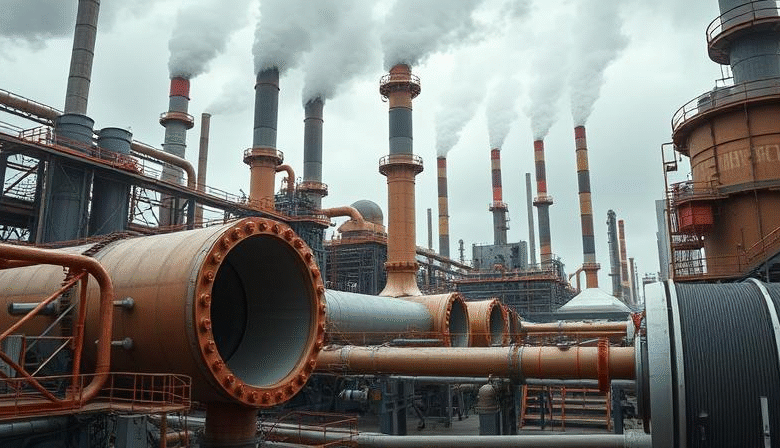Maintenance and Safety of Quick Opening Closures

Quick opening closures are essential elements in numerous industrial contexts. They ensure quick and safe access to pressure vessels, pipelines, and other equipment.
Given their importance, their maintenance and safety cannot be overlooked. Those who do not have specialized skills in the sector, or are not very familiar with quick opening closures, can consider the following information to ensure a safe working environment, but also to minimize downtime and extend the life of the equipment.
Keeping surfaces intact
It is important to pay attention to surface protection. All painted surfaces must be maintained as such. This helps prevent corrosion. Unpainted parts must be covered with specific protective agents.
This creates a barrier against atmospheric and chemical agents. Regularly check the painting and the condition of the protectives.
Lubrication: an aspect not to be overlooked
Lubrication is a key element for the proper functioning of quick opening closures. The closures must be properly lubricated with the products recommended by the manufacturer. Using specific lubricants prevents wear.
The frequency of lubrication varies depending on the use and operating environment. A well-defined lubrication program ensures smooth movement and reduces friction.
Managing seals: a fundamental element
All quick opening closures are equipped with seals. The seals allow the closure to remain sealed. They therefore guarantee the correct pressure inside the appliance. It is good practice to always have a spare seal available.
When opening/closing the device, it may be necessary to replace the old seal with a new one, due to deterioration. This ensures a tight seal.
Preventive maintenance programs
To ensure the long life and proper functioning of industrial quick opening closures, it is necessary to implement regular maintenance. A preventive maintenance program allows you to identify and resolve any problems.
This is before they become critical. This minimizes machine downtime and any repair costs. It is advisable to follow the guidelines of ASME and UNI standards. These standards provide detailed guidance.
Relying on industry experts
Coprikompatt offers a complete assistance service for industrial quick opening closures. The service includes scheduled maintenance and rapid repairs.
It also provides original spare parts. Thanks to a team of specialized technicians, the company guarantees timely and effective interventions. The impact on the operational flow is minimized. Relying on industry professionals ensures efficient management of quick opening closures.
Advanced design and operational considerations
Beyond simple operation and swift access, modern quick opening closures are engineered with a focus on both safety and performance. QOC Solutions champions this philosophy, aiming for designs easily operated by a single individual with intuitive functionality.
This translates to rapid opening and closing times, achieved through a balanced integration of advanced technology. A significant consideration is safety, adhering to standards like ASME VIII div.1 UG-35 and ASME VIII div.2 Par. 4.8 by incorporating audible warning systems to alert operators to residual pressure within the vessel.
The selection of closure type depends on the specific application. Types range from threaded closures (QOC THD) to sector closures, jaw closures, and toothed closures (available in manual or automatic configurations).
These are suitable for a wide array of equipment, including pressure vessels, pig traps, filters, manholes, autoclaves, and timed chain conveyors.
Reliable sealing is often ensured by O-Ring gaskets or specialized lip seals, guaranteeing performance even at low pressures.
Material selection considers the operating environment, with options like carbon steel, stainless steel, duplex, and super duplex alloys available.
Furthermore, protective coatings such as nickel plating, cold galvanizing, Teflon coating, and epoxy primers (applied after sandblasting) can be applied to enhance corrosion resistance and extend service life.




